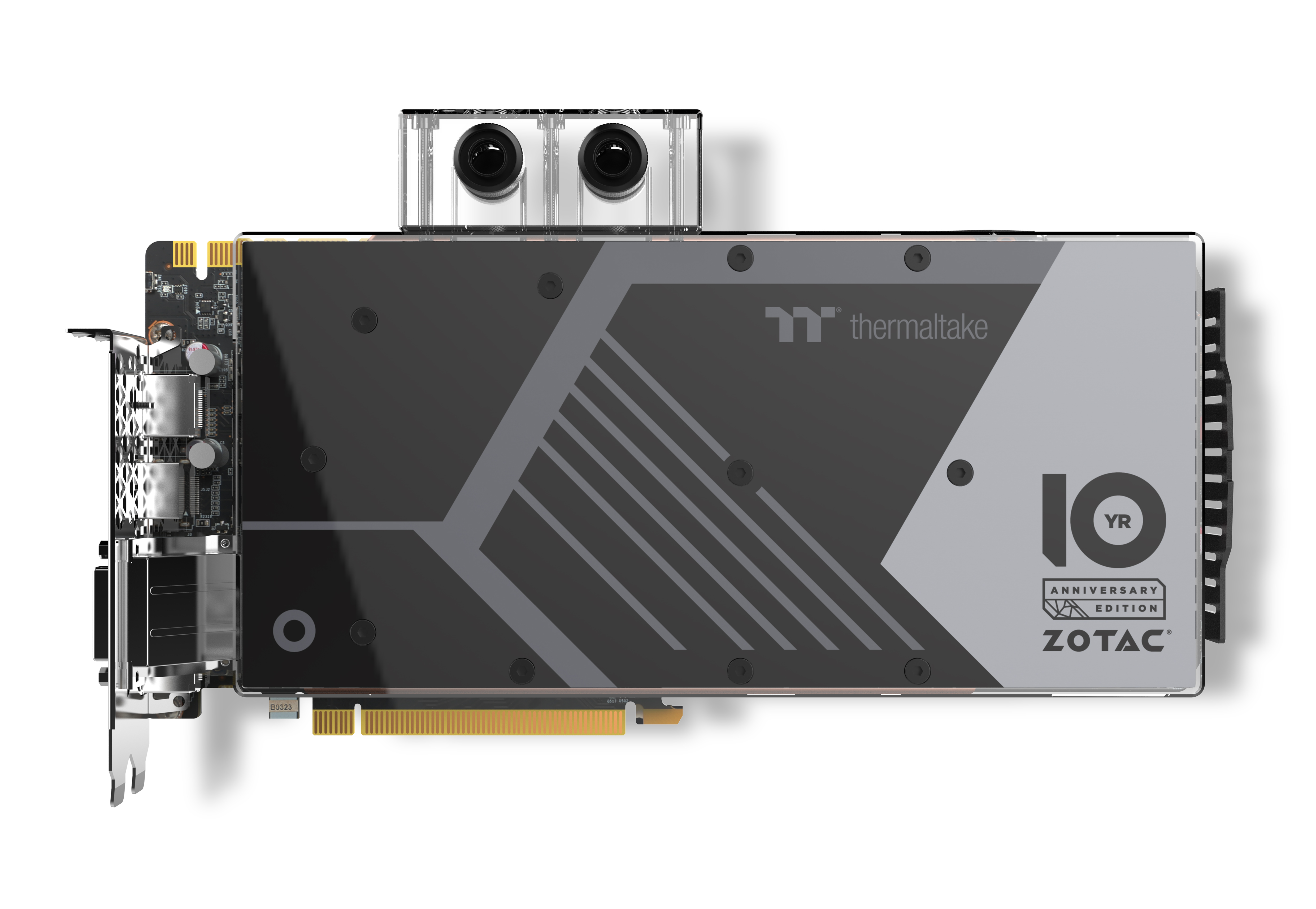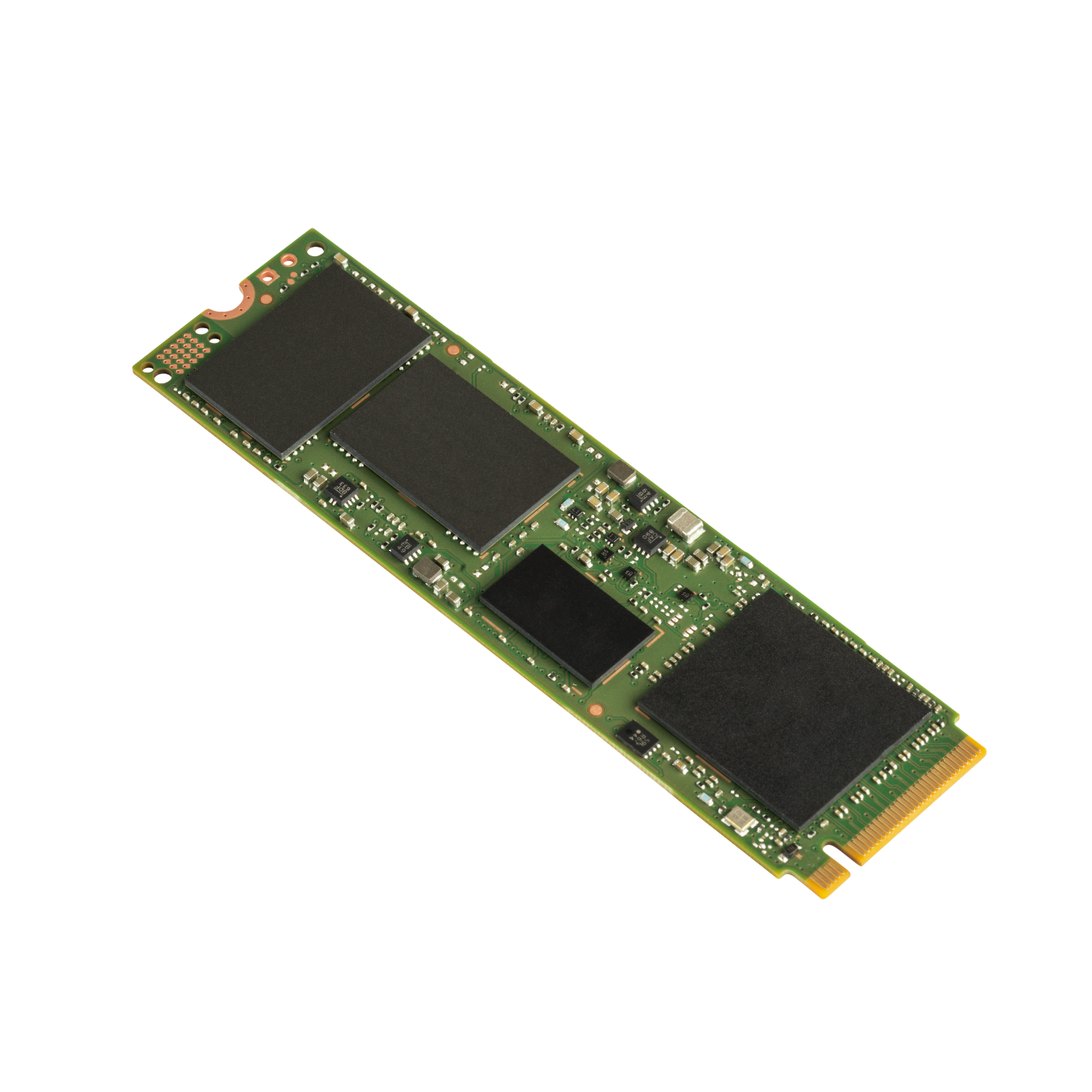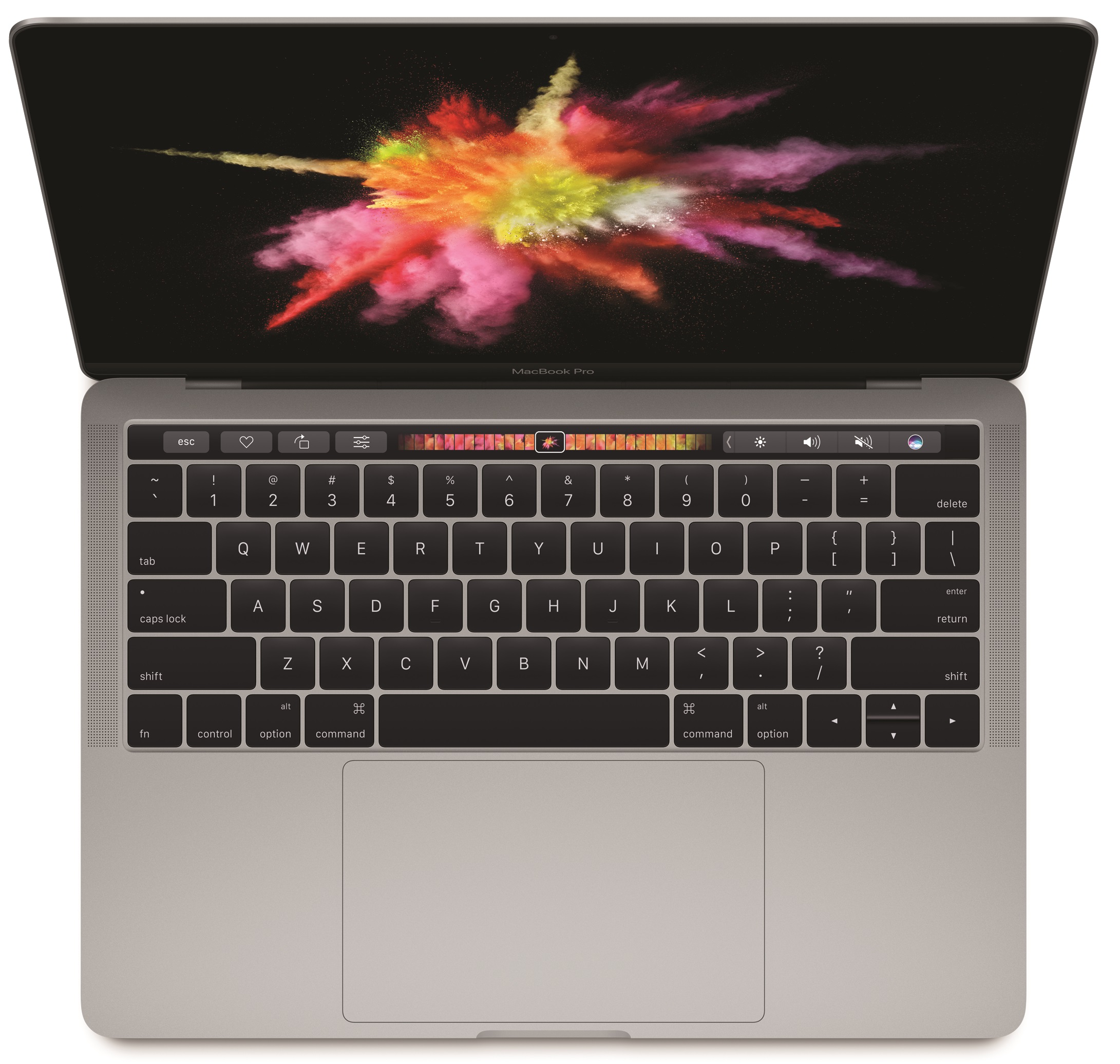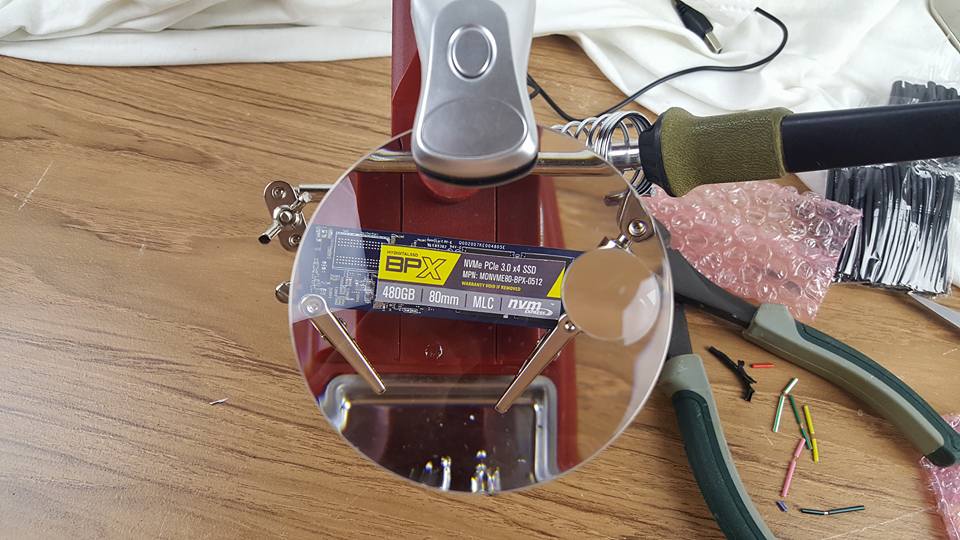Week In CPUs And Storage: Is Apple Gearing Up To Challenge Intel's Desktop CPUs?
Yet another week is in the books, and this one brings signs of change on both the storage and the CPU front. There has been rampant industry speculation lately that Apple is gearing up to replace Intel's desktop CPUs with its own proprietary chips, which would certainly fit well in the company's vertically integrated strategy, and it appears that it has built ARM compatibility in its macOS. We'll hit that topic after the short break.
SSDs have scored their first kill in the HDD wars, as Seagate released its last 15K HDD, and we suspect that 10K HDDs are next up on the chopping block. Industry pundits have been declaring that SSDs will kill the HDD for some time now, but that isn't entirely true for all applications. HDDs still offer tremendous cost advantages for high-capacity needs, but the flagging 10K and 15K HDDs designed for high-performance applications have been under duress for some time. Seagate has bowed to the inevitable rise of the SSD in the high-performance segment, leaving one to wonder if the 15K HDD is just the first 2.5" domino to fall.
Zotac threw itself a 10-year birthday party, and the bonanza included a special-edition Sonix PCIe SSD with a pimped-out shroud, a diminutive Mini PC, a special-edition water cooled GPU, and an upgraded VR Go backpack that wields a GTX 1070 for your VR pleasure. Zotac was too busy blowing out its candles to provide pricing, but the company will provide more info as the products come to market later this year.
Speaking of the death of the HDD, Intel released its new DC P3100 data center SSD series with 3D TLC NAND, which sets the benchmark for the lowest sequential performance on the market. The DC P3100 has slower sequential speed than most HDDs (and even some USB sticks). However, Intel didn't design the little SSDs for sequential workloads, so the low performance hardly matters, and the specifications don't list the burst write speed, which is a more important metric for light-use SSDs.
In either case, the DC P3100 is the first of a spate of cheap SSDs designed to replace the retiring performance-oriented HDDs, so we expect larger versions to come along and assault the last vestiges of the 2.5" HDD market.
Microsoft released a rash of new products, including its Surface Book i7 and Surface Studio, with Intel Skylake CPUs and Nvidia Maxwell GPUs. The development is interesting because Intel's Kaby Lake and Nvidia's Pascal GPUs could have also made their way into the new platform. Microsoft chose to stay with the previous-gen solutions, but still infused the platforms with eye-popping prices that range up to $3,299 for the Surface Book i7 and $4,199 or the Surface Studio. The Surface Studio also comes without an option for SSD storage, but it offers a hybrid drive instead, which could be considered a crime.
These products were likely in development before the Kaby Lake CPUs came to fruition. This class of premium products isn't always focused on pure grunt power, but it might limit the competitive window for Microsoft's latest as designs with newer architectures come to market.
Get Tom's Hardware's best news and in-depth reviews, straight to your inbox.
Apple also got in on the previous-gen action and released its MacBook Pro with Skylake CPUs. At least Apple brought Polaris Radeon Pro and SSDs to bear along with its normal mind-bending pricing model. The latest Macbook's claim to fame (well, the most notable, considering it's using somewhat old tech) is its Touchbar, which may just be another case of Apple's attempted "innovation" run amok. As our News Director Seth Colaner noted, Apple may just be the victim of its own success on the innovation front; it's surely hard to live up to its own reputation, but the Touch Bar certainly falls below the "bar" we expect from the company.
Chris Ramseyer put the MyDigitalSSD BPX under the magnifying glass, literally, and tested the value-centric NVMe SSD against other leading NVMe SSDs. Chris bestowed the Editor's Choice Award upon the BPX, which is a rare occurrence indeed. Head over to the review to see what all the enthusiasm is about.
Is Apple Gearing Up To Take On Intel's CPUs?
Apple's Touch Bar may not be that exciting, but if one were to believe the word on the street, it appears that Apple might have another much larger plan lurking in the shadows. We are traipsing into "unconfirmed" territory here, which we often avoid unless there is a compelling reason to do so (which in this case, there is), so consider yourself forewarned.
Test results of Apple's iPhone 7 A10 Fusion processor recently popped up online, indicating that it scored 3490 on the Geekbench 4.0 single-core benchmark. The ARM-based A10 also purportedly has an A10X variant for the iPad that scores even higher in the benchmark (4236), but the vanilla A10 is already on competitive footing with some of Intel's Core m-series laptop processors. Given the precarious nature of TDP limitations inside of a slim iPhone, it is natural to assume that Apple could scale the A10's design upwards into larger and more powerful variants, thus providing a challenge to Intel's desktop PC dominance.
Of course, Apple's strategic intentions behind its budding chip production capabilities would likely be designed to supplant Intel CPUs in its own Mac products, as opposed to offering them to the broader enthusiast market. Unfortunately, the compatibility issue rears its ugly head. Apple based its macOS on the x86 architecture, which doesn't play nicely with ARM. Apple's possible strategy could be to simply use an enhanced version of its mobile OS for its future desktops, or perhaps it could simply engineer macOS to work on the ARM platform.
This is where the strategic maneuverings may get interesting. According to the Dutch-language Techtastic.nl, Apple has infused its macOS 10:12 Sierra kernel with compatibility for an ARM "Hurricane" family and has a mechanism to use existing apps on the platform. According to the site:
The source code shows that Apple has stopped supporting some Intel processors, including the Intel Core 2 Duo of the first generation MacBook Airs, while at the same time has added support for the ARM Hurricane family. It seems to be here a reference to one of Apple's own chipsets, as the A7 microarchitecture was described as Cyclone, the A8 as Typhoon and the A9 uses the Twister architecture, all based on the instruction sets from ARM.
The transition to a larger A10 Fusion with more cores would be quite the feat, but in light of Apple's seemingly quick developmental trajectory, it is certainly a possibility. If Intel lost Apple's business, it would equate to an immediate loss of nearly 7.4% of the desktop PC market, and since Apple's A10 cut its teeth in the mobile segment, it already has a low power focus, which means larger versions could be competitive in Intel's cash-cow data center segment.
All of this seems a bit far-fetched, and it's notable that Intel is always moving forward (albeit incrementally) on the performance front, so by the time Apple fields competing SoCs, Intel could have already surpassed them.
In either case, it's interesting. The CPU market needs more competition to push prices down and performance up, but I'm not sure that Apple is the savior that we should look to, largely due to its history of high-priced products. AMD is the clearer threat to Intel, unequivocally, but Apple seems to be making significant headway in the fast-moving semiconductor world.
It's more likely that Apple will use the mere threat of its capabilities as a crowbar to force Intel to offer it big discounts on volume CPU shipments, which it will most certainly not pass on to us. Investors, rejoice!
All of this would be great news for TSMC, which appears to have locked up A10 production due to its innovative InFO (Integrated Fan Out) packaging technique, which increases density by combining multiple chips without a substrate.

Paul Alcorn is the Editor-in-Chief for Tom's Hardware US. He also writes news and reviews on CPUs, storage, and enterprise hardware.
-
memadmax Apple using it's own proc may be the reason why the mac pro hasn't received any love or a follow on since 2013.Reply
This may get interesting, if apple can make it affordable for once... -
InvalidError As more and more software gets written for JiT-style environments, hardware manufacturers have that many fewer reasons to remain shackled to their previous platforms. Android has done it with ART/Dalvik, Microsoft has MSIL, Apple has one or two of its own, all of which heavily inspired from Java's JiT.Reply
What does that mean for future hardware performance-wise? That remains to be seen and will depend heavily on future JiT compilers and profilers/optimizers. I am cautiously optimistic at best. -
Plumboby apple being afforadable a joke they be dump to ditch intel if apple make there own processors to the pc market be a huge fail wouldn't touch apple over priced junk & softwareReply -
nutjob2 Intel's legacy architecture can't compete with ARMs in low power usage, and Intel is losing its process advantage, so Apple eventually porting macOS to ARM is inevitable. It serves not only a low power purpose which would allow them to have industry beating battery life, but it also makes them masters of their own domain, being able to design their own CPUs across their product ranges. Apple's PC line is a minority of their revenue, but it has some strategic value and Apple being "different" is also something that they've use strategically to hype their products.Reply -
ohim Reply18795538 said:Apple using it's own proc may be the reason why the mac pro hasn't received any love or a follow on since 2013.
This may get interesting, if apple can make it affordable for once...
Apple makes absolutely nothing affordable, they are in for the money and to be a luxury brand so don`t expect anything. As for the CPU they either go for AMD`s Zen or the very crazy part would be to move everything to something on the lines of the mobile CPUs, but this would piss off so many people because they change again the architecture. -
alidan Question, is there any apples to apples way to compare arm to x86 as we know it now? I know arm is better for low power, but from what I understood it lacked power. I know it was something where one of the iphone chips clock for clock beat out intel, or at least could beat it out, but somehow, I find arm taking over being VERY VERY doubtful, as having many android and IXXXX things, they NEVER handle anything smoothly, even if i just want it to be as smooth as my current phenom II 955 at stock speeds and ddr2. If they can not work there effectively, how the hell would the take over a real laptop or computer without brute force "I got so many cores every process has several" or some serious powering up that I have yet to even hear mentioned, only theoretical 'if they put this with a proper heat sync and clocked it to 2.5 or 3ghz it would beat a desktop'Reply -
Mostafa_17 I question whether the CPU used in iphone is scalable. You are speaking of two distinct classes of CPUs: One is mobile, the other is Desktop. Right now, Intel's kaby Lake is almost five times more efficient than A10's high power cores. One reason is that the 25 watts chip inside iphones is very weak in real demands: For example, in tests which the hardware acceleration of their custom ARM is not a matter. For example, it only beats atom clovertrail+ 32 nm in 3d marks physics performance. It is not the only benchmark so, there are benchmarks which apple fails very badly, in addition to those famous good in. It means they certainly did use custom ICs rather than real CPUs which understand software well. Even now it is no more a secret Apple uses FPGA in iphone, circuits like for rendering HTML is very old Apple did to increase performance. But Intel's CPUs are made by an independent company and works across a lot of platforms without need for a driver or even complex optimizations. It makes a steady performance across many platforms. Whether it is OS or virtualization or programming languages or mobile/Desktop use. Intel's latest are king in both Desktop and mobile...Reply
Intel's broadwell is so old, you must compare apple's a10 with it in real use, of course, it has less limitations... How do I say it? based on real use... My Laptop with haswell is very fast i7 quad core 37 watts, but in spite of it, 70% of battery use of my 4 hours laptop is by screen only, so, the CPU is much more efficient than screen. That's in windows 10 x64 with lots of programs on. Now, you suppose A10, this is like 90% of use is by CHIPs inside iphone (specially when using it mixed). Users complain about iphone 7 battery life extensively, one said if you run fitness app and run, it consumes 1% of battery every one or two minutes (or two percents in every one min/I don't remember well).
Intel's Kaby Lake is twice faster than Skylake. And Skylake? Intel Xeon E3-1240L v5: a 25 watts TDP CPU with 4 cores: How fast is it? Faster than quad core broadwell 65 watts and faster than haswell quad core 84 watts in every area. Price? Only $278...
Thanks! -
d_kuhn If you're building email and web browsing machines then I'm sure Apple can put something compelling together - there's a lot of competition in the mobile space and a lot of evolution of low power chipsets. However... they're not going to build a high performance desktop processor that can compete... so if they try to shove that square peg mobile tech into the round hole desktop/workstation... even high performance mobile markets, they're just going to make their products that much less competitive. However - it would explain why the keep eliminating ports - their new processors won't have the performance to deal with a lot of peripherals. :-PReply -
jasonf2 Apple may well do this but they won't be cheap. They don't play low margin games. If they are doing this all they are going for is a position similar to the Samsung/Quallcomm relationship. They will be able to put pricing pressure on Intel while at the same time be able to keep access to the performance Intel has to offer. I am no apple fan so I find it kind of funny that they risk the Windows RT Surface situation by splitting archs. No matter how well you optimize the OS to run dual they will be left making compromises especially in third party software optimization to processor extensions. Armchair football here but my guess for the "no love" situation has more to do with margin than anything else. As a diy pc builder over the years the pc sweet spot for the "ultimate" enthusiast build hovered around the three grand mark for about twenty years (Street price of components). In the last 5-10 years the enthusiast components have skyrocketed and some new expensive must have pieces (like NVMe SSD's) are now in the system specs. On top of that Intel isn't really giving that class the first in line to the new tech treatment that they used to get. The -E lineup doesn't do itself any favors by being a full core cycle behind. That ultimate build price is now well in excess of $6000. Mac knows that if their MSRP goes too far out of the top they will lose share back to Windows so they have a hardware ceiling that continues to be more restrictive as components go up. Mac will be more than happy to sell you a $10000 box from their website today. But it isn't a enthusiast dream machine with bragging rights, it is a high end graphic arts production machine with components that reflect that fact (Xeon and Firepro). The ARM integration will probably show up in their bottom end laptop products, which in my opinion is already under powered/overpriced and stuck in an ultra restrictive OS ecosystem. But I digress because as I said before I am not an Apple Fanboy.Reply -
negusp ReplyRight now, Intel's Kaby Lake is almost five times more efficient than A10's high power cores
Whaaat?
Intel's Kaby Lake is twice faster than Skylake.
Whhaaaaaatttt?
Intel's latest are king in both Desktop and mobile...
Wat





